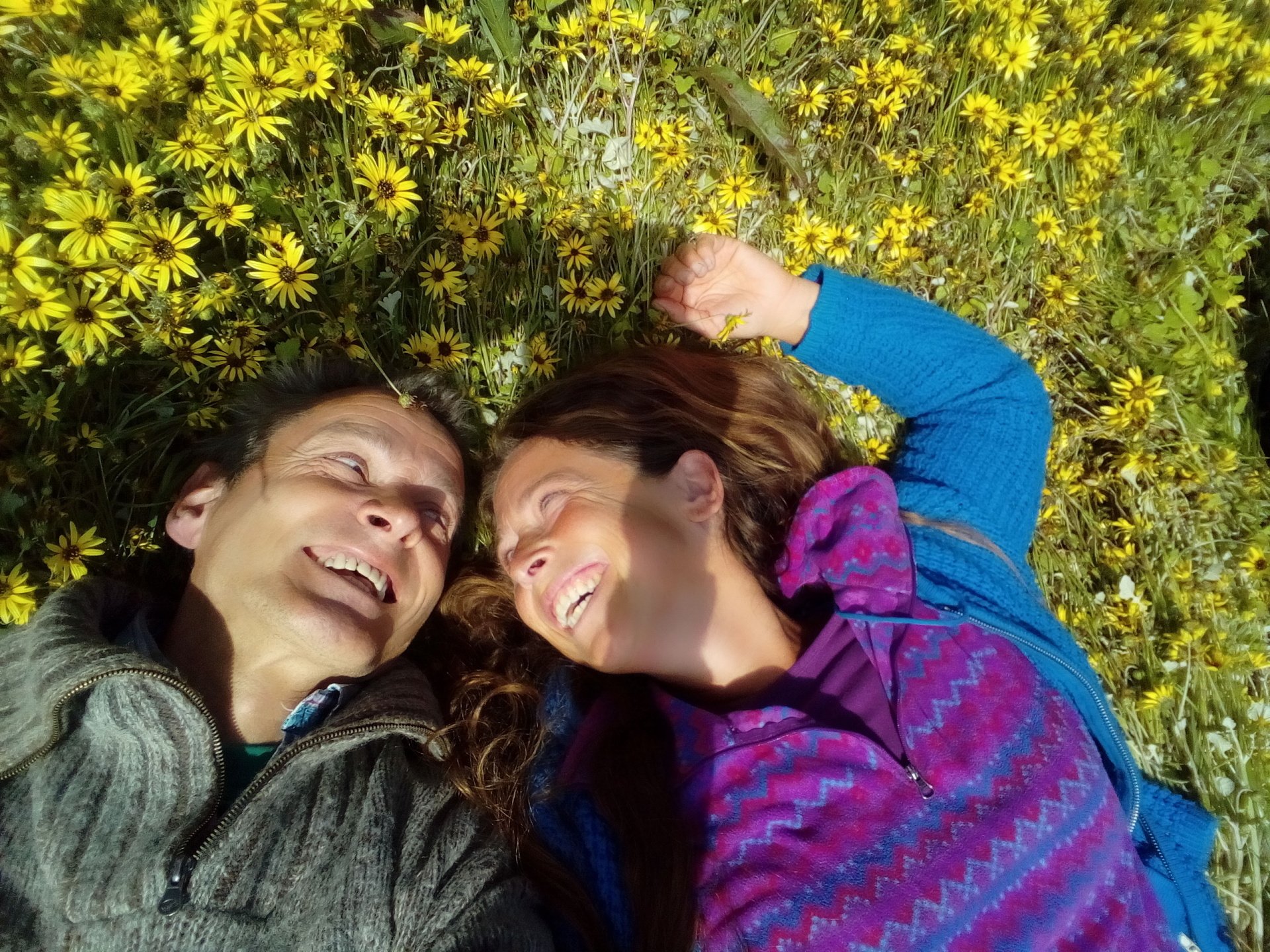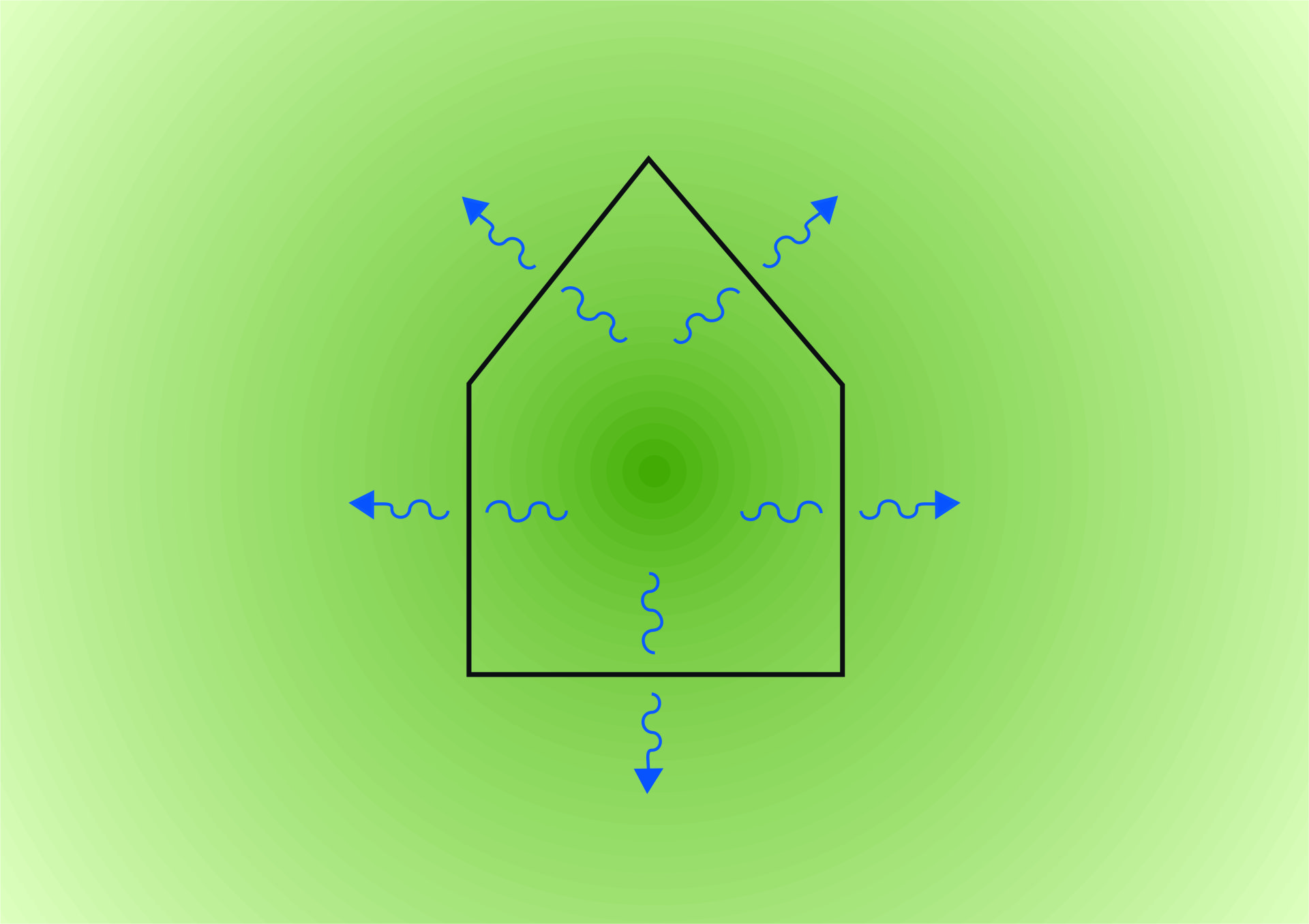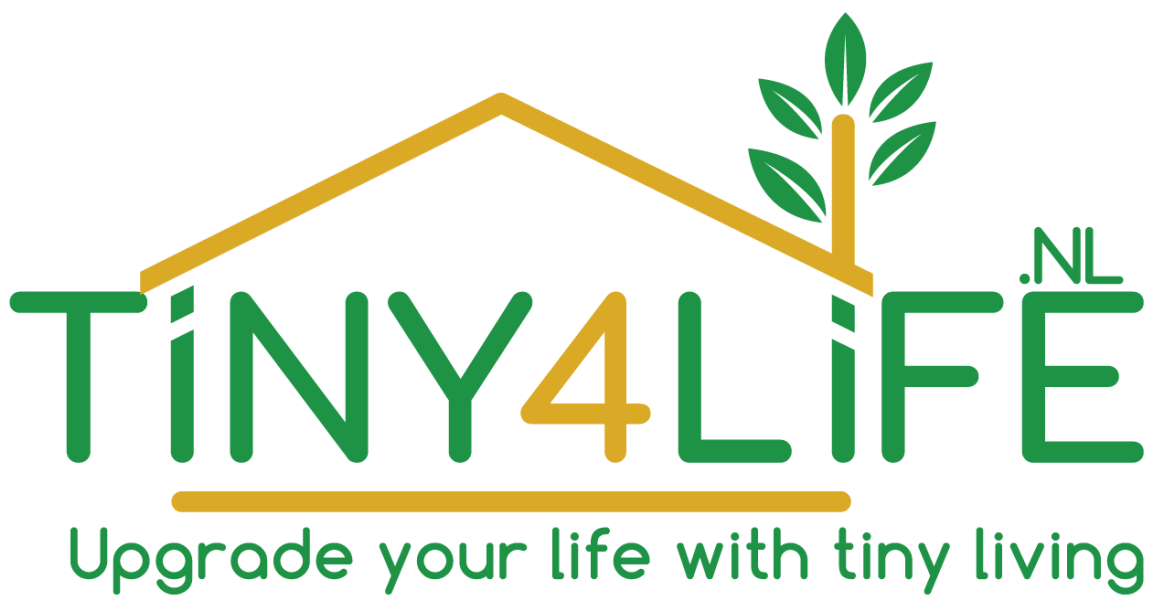Ecological

Feel Free
Tiny4Life was created from the desire to build a fully sustainable and healthy, but also cosy and spacious house for ourselves. Because we travel a lot and let our lives be led by what comes our way, we wanted to be able to move our house easily. This has become possible thanks to an innovative folding/sliding system from one of our partners.
While we were working on the design, we discovered that many other people also have the desire to live differently, healthier and in greener areas. In this way, consciously leaving a smaller ecological footprint. From there, it was a logical step to share this design with the world. Designed and made with Love.
Your freedom is increased because you collect less stuff and you have lower housing and maintenance costs. Perhaps you will be able to work less and have more time for fun and passionate things. In short: a richer life. Should you need more time to de-clutter... the house has a storage attic of 10 m².
You can even feel so free that you say goodbye to the public utilities and become completely self-sufficient.

Feel Free
Tiny4Life was created from the desire to build a fully sustainable and healthy, but also cosy and spacious house for ourselves. Because we travel a lot and let our lives be led by what comes our way, we wanted to be able to move our house easily. This has become possible thanks to an innovative folding/sliding system from one of our partners.
While we were working on the design, we discovered that many other people also have the desire to live differently, healthier and in greener areas. In this way, consciously leaving a smaller ecological footprint. From there, it was a logical step to share this design with the world. Designed and made with Love.
Your freedom is increased because you collect less stuff and you have lower housing and maintenance costs. Perhaps you will be able to work less and have more time for fun and passionate things. In short: a richer life. Should you need more time to de-clutter... the house has a storage attic of 10 m².
You can even feel so free that you say goodbye to the public utilities and become completely self-sufficient.

Feel Free
Tiny4Life was created from the desire to build a fully sustainable and healthy, but also cosy and spacious house for ourselves. Because we travel a lot and let our lives be led by what comes our way, we wanted to be able to move our house easily. This has become possible thanks to an innovative folding/sliding system from one of our partners.
While we were working on the design, we discovered that many other people also have the desire to live differently, healthier and in greener areas. In this way, consciously leaving a smaller ecological footprint. From there, it was a logical step to share this design with the world. Designed and made with Love.
Your freedom is increased because you collect less stuff and you have lower housing and maintenance costs. Perhaps you will be able to work less and have more time for fun and passionate things. In short: a richer life. Should you need more time to de-clutter... the house has a storage attic of 10 m².
You can even feel so free that you say goodbye to the public utilities and become completely self-sufficient.

Feel Free
Tiny4Life was created from the desire to build a fully sustainable and healthy, but also cosy and spacious house for ourselves. Because we travel a lot and let our lives be led by what comes our way, we wanted to be able to move our house easily. This has become possible thanks to an innovative folding/sliding system from one of our partners.
While we were working on the design, we discovered that many other people also have the desire to live differently, healthier and in greener areas. In this way, consciously leaving a smaller ecological footprint. From there, it was a logical step to share this design with the world. Designed and made with Love.
Your freedom is increased because you collect less stuff and you have lower housing and maintenance costs. Perhaps you will be able to work less and have more time for fun and passionate things. In short: a richer life. Should you need more time to de-clutter... the house has a storage attic of 10 m².
You can even feel so free that you say goodbye to the public utilities and become completely self-sufficient.

Ecological footprint
Tiny4Life works exclusively with materials that are sustainable and ecological. Throughout the entire process of extraction, construction, use and demolition we strive to minimise our impact on the environment. The current way of building houses is damaging to the environment in many ways and causes enormous CO2 emissions. Our aim is to keep the ecological footprint of these Tiny Houses as small as possible. We use Scandinavian pine as the basis for all walls and floors. Cross-glued planks to solid boards of 6 cm thick. Wood is a renewable raw material that actually traps CO2 and thus contributes to reducing climate change. In Austria alone, 1 m³ of wood grows every second, storing 1 tonne of CO2 from the atmosphere. For window frames and cladding, Timmerfabriek Neede exclusively uses sustainably produced wood with the FSC/PEFC label. This guarantees the preservation of our forests, the lungs of our planet. We consciously choose not to use hardwood, but rather the fast-growing European softwood which has been ingeniously preserved to 'Finti'.
Steico floor, wall and roof insulation is made of softwood pulp and is therefore completely vapour-permeable. It does not contain formaldehyde as a binding agent, like many other cheaper insulation materials, so no harmful gases are released into the home.
By choosing this Tiny4Life house you are consciously leaving a smaller footprint.
Until 200 years ago, we built houses using mainly local building materials. After the industrial revolution, steel and concrete made their appearance and everything and everyone focused on the fact that building had to be faster and cheaper. The production of concrete alone accounts for 9% of global CO2 emissions. The price of today's wastefulness and pollution in construction is being pushed into the future. And to think that the all-important indoor climate in most new houses leaves much to be desired, precisely because of these material choices. This can be felt in muscles and joints. It can be different... Choose a healthy indoor climate.
Ecological footprint
Tiny4Life works exclusively with materials that are sustainable and ecological. Throughout the entire process of extraction, construction, use and demolition we strive to minimise our impact on the environment. The current way of building houses is damaging to the environment in many ways and causes enormous CO2 emissions. Our aim is to keep the ecological footprint of these Tiny Houses as small as possible. We use Scandinavian pine as the basis for all walls and floors. Cross-glued planks to solid boards of 6 cm thick. Wood is a renewable raw material that actually traps CO2 and thus contributes to reducing climate change. In Austria alone, 1 m³ of wood grows every second, storing 1 tonne of CO2 from the atmosphere. For window frames and cladding, Timmerfabriek Neede exclusively uses sustainably produced wood with the FSC/PEFC label. This guarantees the preservation of our forests, the lungs of our planet. We consciously choose not to use hardwood, but rather the fast-growing European softwood which has been ingeniously preserved to 'Finti'.
Steico floor, wall and roof insulation is made of softwood pulp and is therefore completely vapour-permeable. It does not contain formaldehyde as a binding agent, like many other cheaper insulation materials, so no harmful gases are released into the home.
By choosing this Tiny4Life house you are consciously leaving a smaller footprint.
Until 200 years ago, we built houses using mainly local building materials. After the industrial revolution, steel and concrete made their appearance and everything and everyone focused on the fact that building had to be faster and cheaper. The production of concrete alone accounts for 9% of global CO2 emissions. The price of today's wastefulness and pollution in construction is being pushed into the future. And to think that the all-important indoor climate in most new houses leaves much to be desired, precisely because of these material choices. This can be felt in muscles and joints. It can be different... Choose a healthy indoor climate.
Ecological footprint
Tiny4Life works exclusively with materials that are sustainable and ecological. Throughout the entire process of extraction, construction, use and demolition we strive to minimise our impact on the environment. The current way of building houses is damaging to the environment in many ways and causes enormous CO2 emissions. Our aim is to keep the ecological footprint of these Tiny Houses as small as possible. We use Scandinavian pine as the basis for all walls and floors. Cross-glued planks to solid boards of 6 cm thick. Wood is a renewable raw material that actually traps CO2 and thus contributes to reducing climate change. In Austria alone, 1 m³ of wood grows every second, storing 1 tonne of CO2 from the atmosphere. For window frames and cladding, Timmerfabriek Neede exclusively uses sustainably produced wood with the FSC/PEFC label. This guarantees the preservation of our forests, the lungs of our planet. We consciously choose not to use hardwood, but rather the fast-growing European softwood which has been ingeniously preserved to 'Finti'.
Steico floor, wall and roof insulation is made of softwood pulp and is therefore completely vapour-permeable. It does not contain formaldehyde as a binding agent, like many other cheaper insulation materials, so no harmful gases are released into the home.
By choosing this Tiny4Life house you are consciously leaving a smaller footprint.
Until 200 years ago, we built houses using mainly local building materials. After the industrial revolution, steel and concrete made their appearance and everything and everyone focused on the fact that building had to be faster and cheaper. The production of concrete alone accounts for 9% of global CO2 emissions. The price of today's wastefulness and pollution in construction is being pushed into the future. And to think that the all-important indoor climate in most new houses leaves much to be desired, precisely because of these material choices. This can be felt in muscles and joints. It can be different... Choose a healthy indoor climate.
Third skin
After your skin and clothes, your house should feel like a third skin. The most important thing is that this skin breathes, otherwise it dies. The entire structure is designed to optimise this breathing function. There are no emissions of harmful gases, as is the case with many other building materials. Constant natural ventilation is provided. This is a requirement because the stove's fire also needs oxygen. Apart from the extractor hood in the kitchen, there is no mechanical ventilation. The natural building materials contribute to a constant, pleasant humidity. Pleasant for muscles and joints.

Third Skin
After your skin and clothes, your house should feel like a third skin. The most important thing is that this skin breathes, otherwise it dies. The entire structure is designed to optimise this breathing function. There are no emissions of harmful gases, as is the case with many other building materials. Constant natural ventilation is provided. This is a requirement because the stove's fire also needs oxygen. Apart from the extractor hood in the kitchen, there is no mechanical ventilation. The natural building materials contribute to a constant, pleasant humidity. Pleasant for muscles and joints.

Low radiation
With the ever-increasing technical radiation around us, the indoor quality of your home is becoming increasingly important. This is where you want to recharge your batteries before you go out again the next day. This Tiny4Life house is low in radiation thanks to the use of special BioCable for the sockets, in combination with a 12 Volt lighting installation via the solar panels, as well as avoiding iron construction parts as much as possible.
Iron in general attracts ambient radiation. Whether it is iron in a concrete foundation or iron in the supporting structure or an iron frame/substructure. For this reason the use of iron in our Tiny4Life houses has been deliberately avoided and limited to hinges and screws. This is why we have chosen an all-wood construction. Electricity in general is an invisible polluter. The electromagnetic field 'disturbs' the electrical currents in our own bodies. It is nice to come home to a house with little radiation. That is why the lighting is 12 Volt, directly fed by the solar panels. This is direct current (just like a battery in your torch) and therefore does not emit an electromagnetic field. The energy of the 2 solar panels is stored in 2 batteries so that if there is no sunshine, you will still have power. A normal mains connection brings 220 Volt to the sockets for the fridge, washing machine etc. Since 220 Volts is always alternating current, it emits an electromagnetic field that affects our functioning. This is why we use the specially developed Biocable in our Tiny4Life houses. This unique electrical cable captures the electro-smog in its steel and aluminium sheath and discharges it via a special earthing system. Standard in every Tiny4Life house. All this extra attention makes you feel so calm in our Tiny4Life house.
If you prefer to go completely off-the-grid, the standard meter cupboard can be extended with an inverter and extra batteries tailored to the location and position in relation to the sun.
Low radiation
With the ever-increasing technical radiation around us, the indoor quality of your home is becoming increasingly important. This is where you want to recharge your batteries before you go out again the next day. This Tiny4Life house is low in radiation thanks to the use of special BioCable for the sockets, in combination with a 12 Volt lighting installation via the solar panels, as well as avoiding iron construction parts as much as possible.
Iron in general attracts ambient radiation. Whether it is iron in a concrete foundation or iron in the supporting structure or an iron frame/substructure. For this reason the use of iron in our Tiny4Life houses has been deliberately avoided and limited to hinges and screws. This is why we have chosen an all-wood construction. Electricity in general is an invisible polluter. The electromagnetic field 'disturbs' the electrical currents in our own bodies. It is nice to come home to a house with little radiation. That is why the lighting is 12 Volt, directly fed by the solar panels. This is direct current (just like a battery in your torch) and therefore does not emit an electromagnetic field. The energy of the 2 solar panels is stored in 2 batteries so that if there is no sunshine, you will still have power. A normal mains connection brings 220 Volt to the sockets for the fridge, washing machine etc. Since 220 Volts is always alternating current, it emits an electromagnetic field that affects our functioning. This is why we use the specially developed Biocable in our Tiny4Life houses. This unique electrical cable captures the electro-smog in its steel and aluminium sheath and discharges it via a special earthing system. Standard in every Tiny4Life house. All this extra attention makes you feel so calm in our Tiny4Life house.
If you prefer to go completely off-the-grid, the standard meter cupboard can be extended with an inverter and extra batteries tailored to the location and position in relation to the sun.
